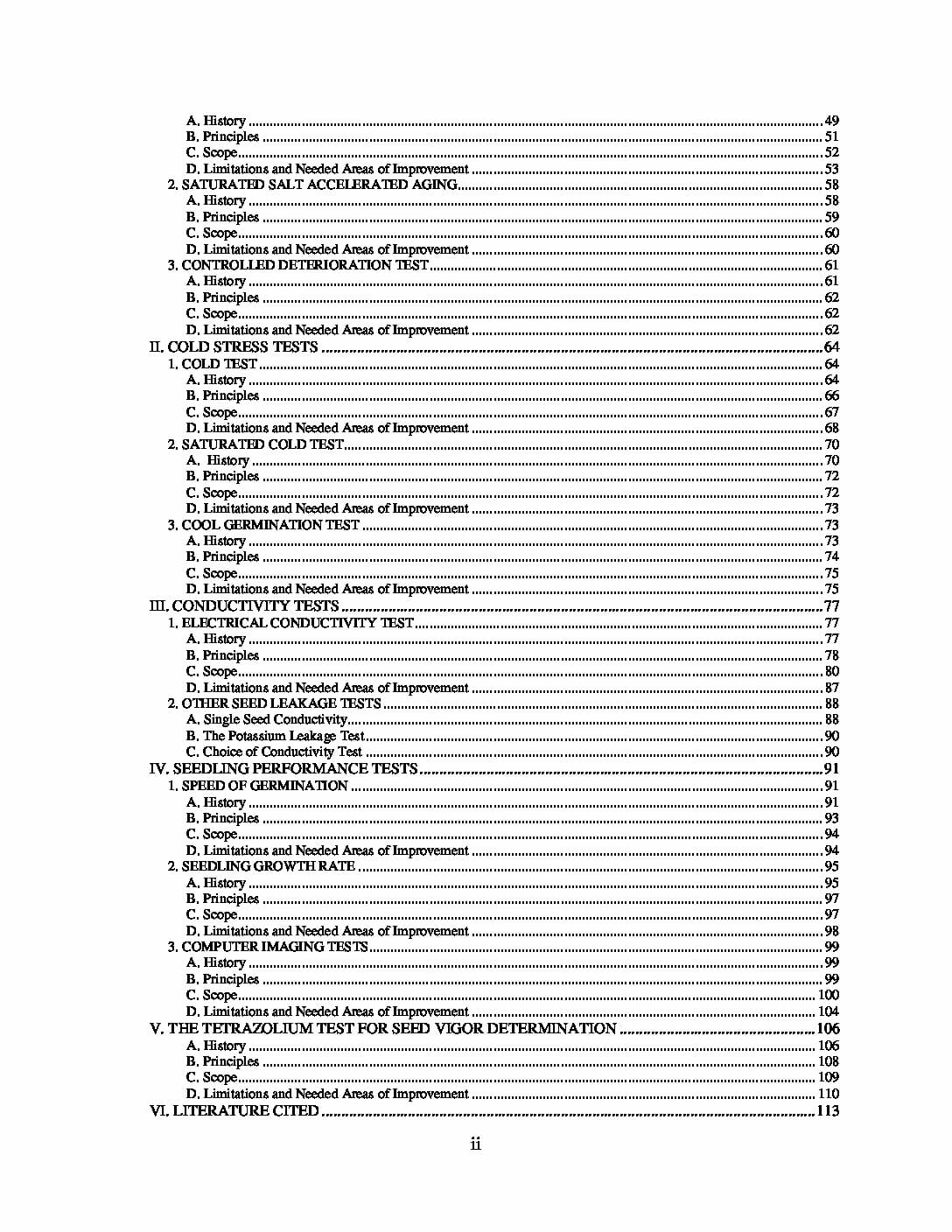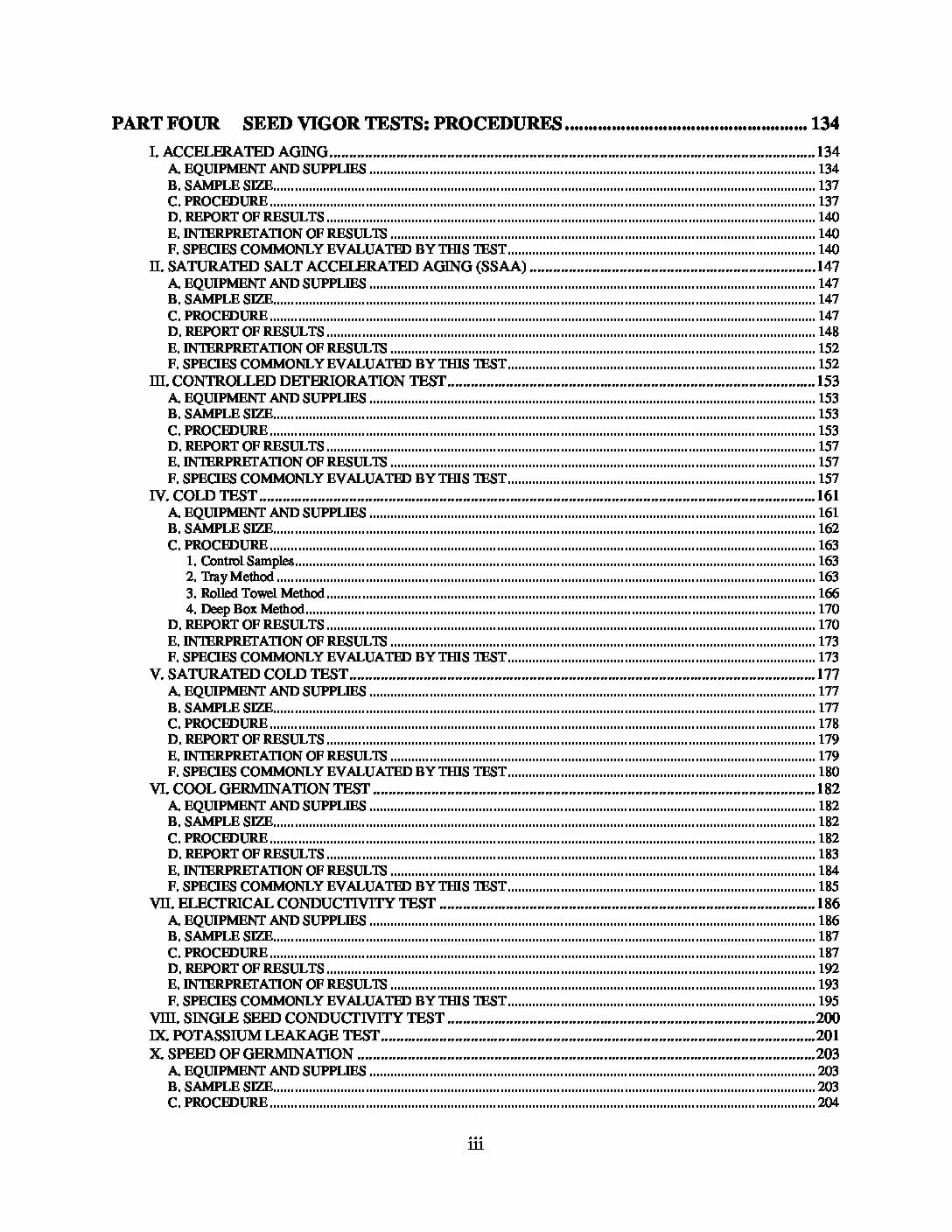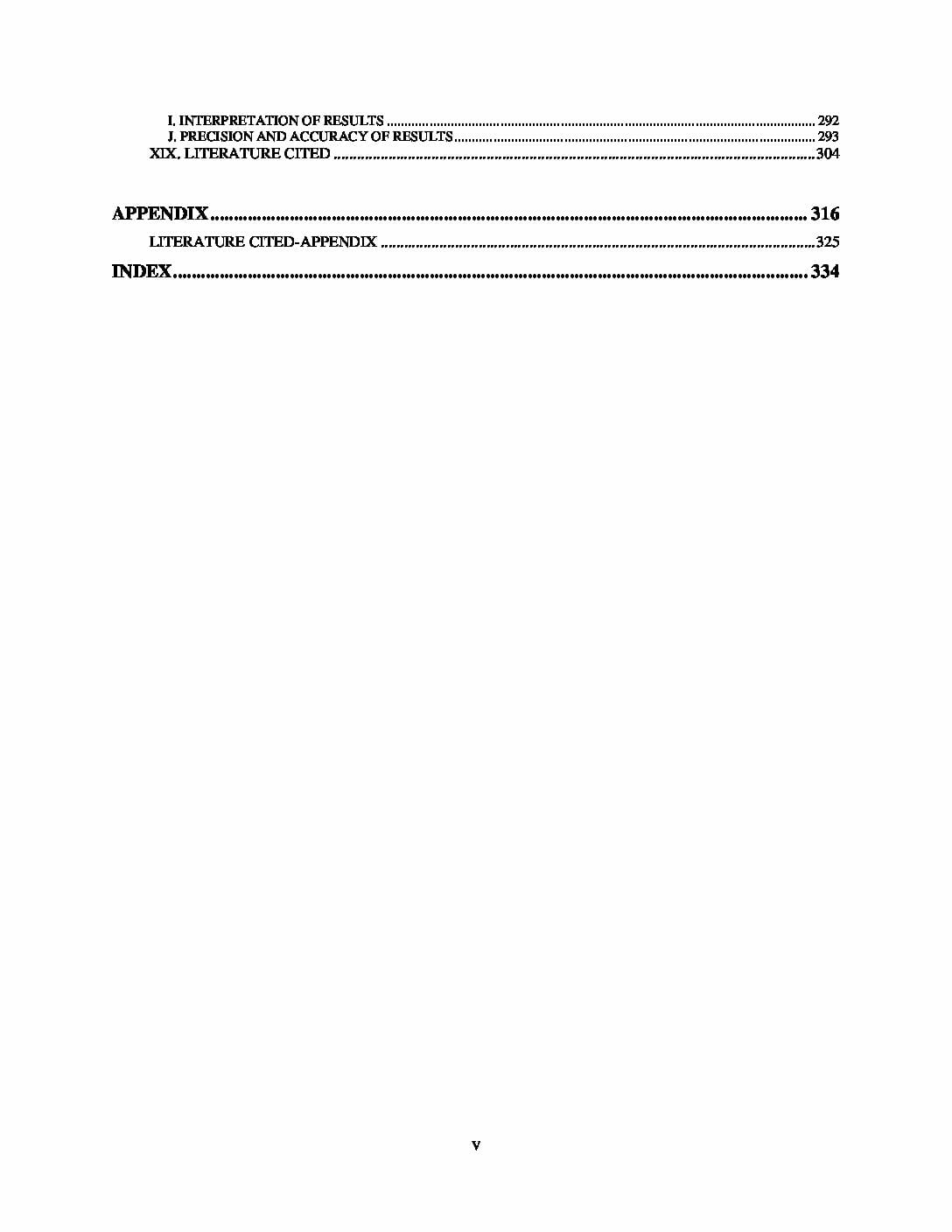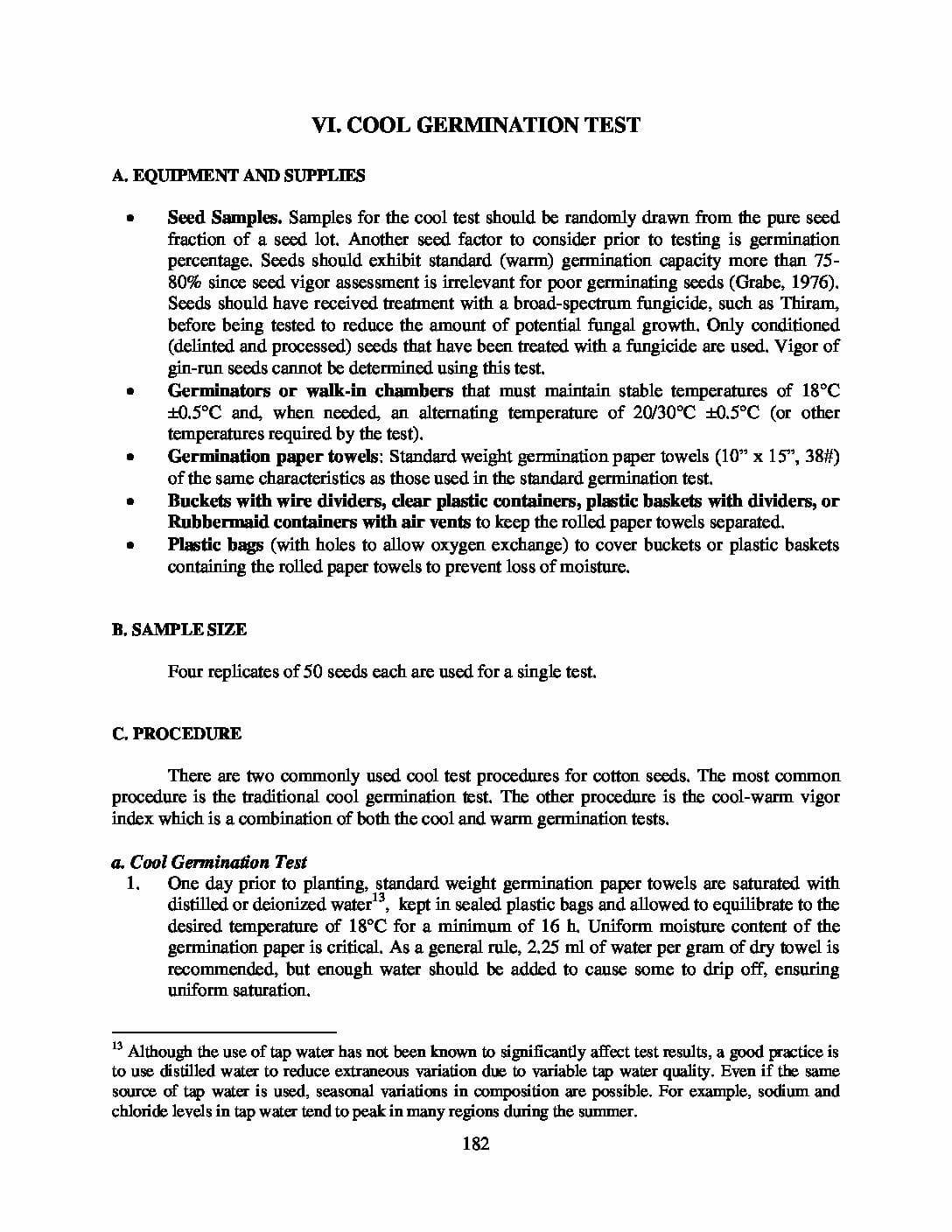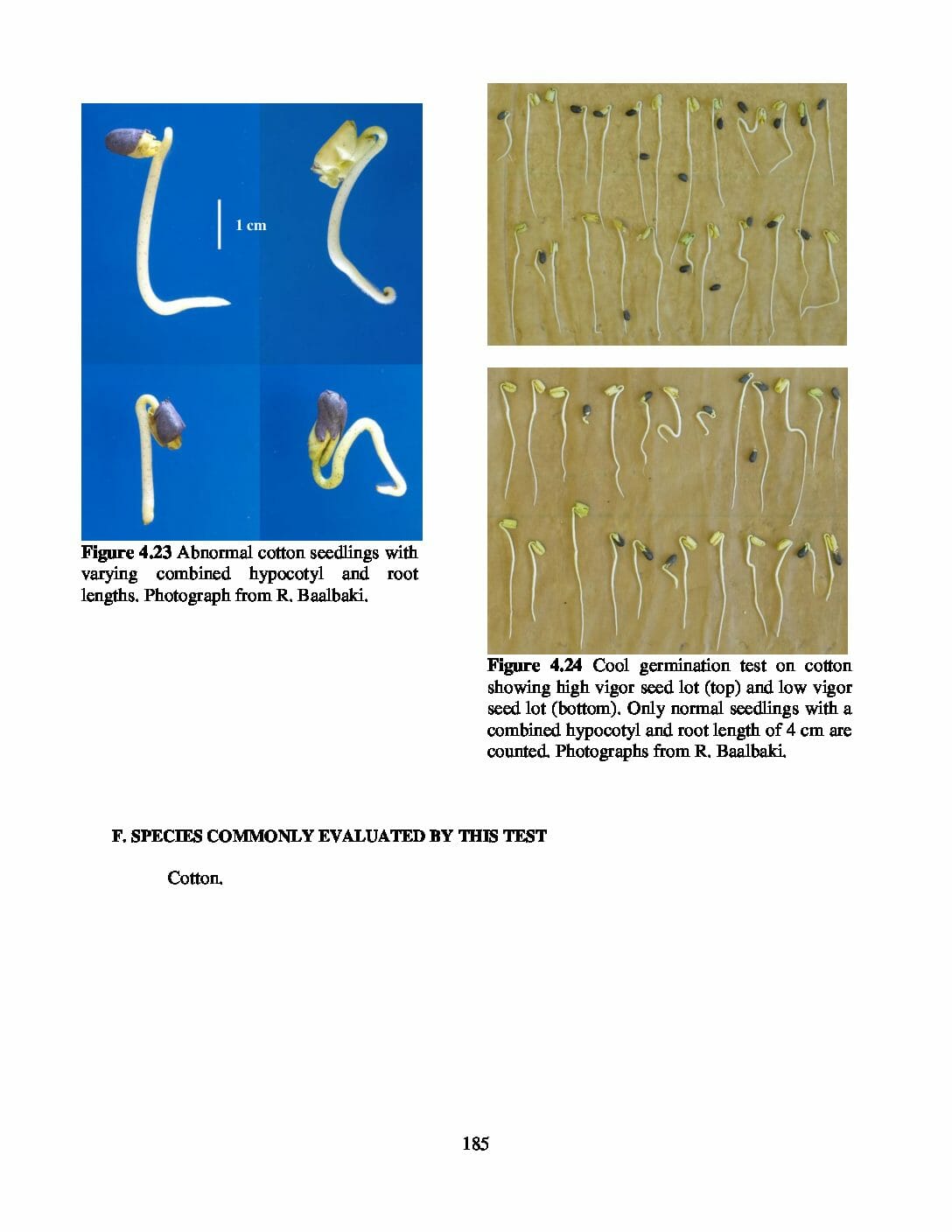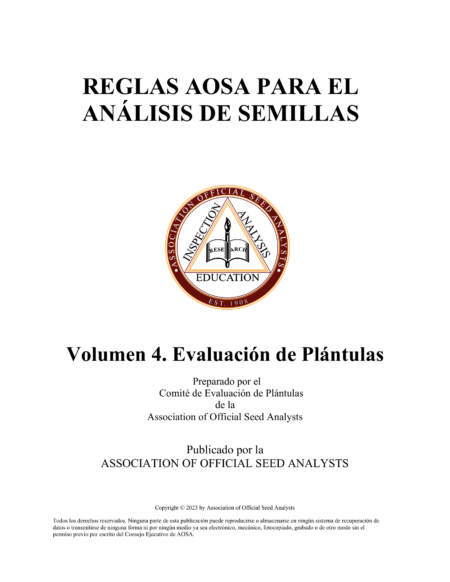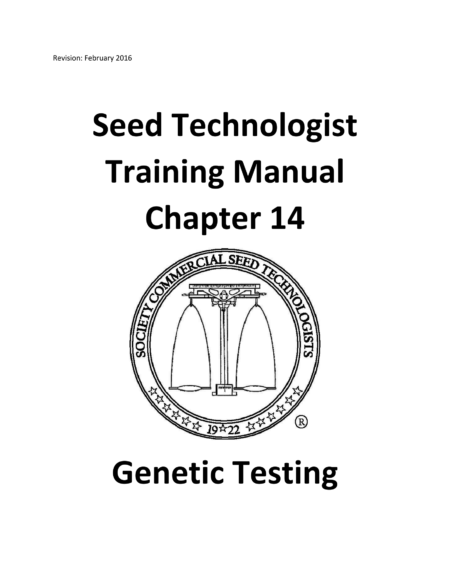Description
The Association of Official Seed Analysts is pleased to announce the publication of a new Seed Vigor Testing Handbook. The new handbook is a comprehensive revision of the 1983 and 2002 versions that set the standard for vigor testing. As a methodical and detailed resource, the handbook will be of value to seed technologists, scientists, students, and industry personnel interested in the fascinating subjects of seed vigor and seed quality. The Seed Vigor Testing Handbook has been internationally recognized as an important tool for all aspects of vigor testing, and the new edition represents the definitive authority on the theory, standardization, applications and methods of seed vigor testing.
The handbook is divided into four parts, each covering a different aspect of vigor testing. Part One focuses on explaining the importance of vigor testing, its rich history, basic vigor concepts and definition of seed vigor. Part Two emphasizes important issues related to the standardization of vigor tests such as use of standards, control samples, tolerances, sampling techniques, etc., general procedures for controlling variation, as well as presentation and interpretation of vigor test results. In Parts Three and Four, the authors have taken a new approach to classifying seed vigor tests by dividing them into categories according to Aging, Cold, Conductivity, Seedling Performance, and Tetrazolium tests. Part Three focuses on the principles of each vigor test, while Part Four presents detailed descriptions of test procedures. Considerable research in vigor testing has been reported since 1983 for specific crops. This information is compiled in an Appendix that lists more than 50 major crops and the vigor tests that have been successfully used to test them.
BRIEF OVERVIEW OF CONTENTS:
- PART ONE: THE IMPORTANCE OF SEED VIGOR TESTING. History of Seed Vigor Testing; Standardization of Seed Vigor Tests; Seed Vigor Concepts
- PART TWO: VARIABLES AND GENERAL PROCEDURES IN VIGOR TESTING. Variables in Vigor Testing; Use of Control Samples; Tolerances; Proper Sampling Techniques; Determinations of Soil Moisture Content and Water Holding Capacity; Adjusting Seed Moisture Content; Assessing Seed Size (Weight) Variation; Proper Placement of Replicates in Germination Chambers.
- PART THREE: SEED VIGOR TESTS – PRINCIPLES. Aging tests; Cold Stress Tests; Conductivity Tests; Seedling Performance Tests; Tetrazolium Tests For Seed Vigor Determination.
- PART FOUR: SEED VIGOR TESTS – PROCEDURES. Accelerated Aging Test; Saturated Salt Accelerated Aging Test; Controlled Deterioration Test; Cold Test; Saturated Cold Test; Cool Germination Test; Electrical Conductivity Test; Single Seed Conductivity Test; Potassium Leakage Test; Speed of Germination Test; Seedling Growth Rate Test; Computer Imaging Tests; Tetrazolium Vigor Test For Corn; Tetrazolium Vigor Test For Peanut; Tetrazolium Vigor Test For Cottonseed; Tetrazolium Vigor Test For Dry Beans; Tetrazolium Vigor Test For Soybeans.
- APPENDIX
- INDEX
The Association of Official Seed Analysts acknowledges the significant contributions of all authors and especially the four editors who reviewed the final draft: Drs. Riad Baalbaki, Sabry Elias, Julio Marcos-Filho, and Miller B. McDonald; their contributions to the advancement of seed technology are sincerely appreciated. The new Seed Vigor Testing Handbook is an important demonstration of AOSA’s commitment to the refinement and modification of the rules and procedures for seed testing, and ensuring that testing procedures are standardized between analysts and among laboratories.



